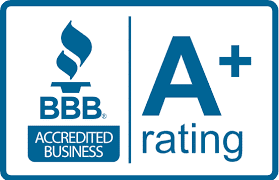
Replacing a roof is one of the most significant investments a homeowner can make, and in 2025, the variables affecting that cost are more nuanced than ever. Between labor shortages, material price fluctuations, climate-related building codes, and advanced roofing technologies, understanding the factors that contribute to the cost of roof replacement is crucial for making an informed decision. This blog breaks down the key factors influencing pricing in today’s roofing market, helping homeowners budget wisely and choose materials and services that suit both their property and their finances.
Material Choice Heavily Impacts the Cost of Roof Replacement
When it comes to roofing, material selection is the most immediate and influential factor in determining the total cost of roof replacement. Each material carries its own price point, expected lifespan, and installation complexity.
Asphalt Shingles Remain the Budget-Friendly Standard
Asphalt shingles remain the most popular roofing option due to their affordability and widespread availability. In 2025, standard three-tab shingles generally cost less than architectural shingles but have a shorter lifespan. Homeowners opting for asphalt can expect material costs to be relatively low, with total project costs varying depending on the roof size and layout.
Premium Materials Increase Both Durability and Expense
Those seeking long-term performance and upscale curb appeal often opt for premium options, such as metal, clay tile, or slate. These materials come at a higher initial cost but typically offer a much longer service life. Metal roofing, for instance, is energy-efficient and recyclable, while natural slate roofs can last more than 100 years. With these benefits come higher installation fees and specialized labor requirements, both of which contribute to the increased total cost of roof replacement.
Emerging Green Technologies Affect Pricing
Solar shingles and cool roofs—both designed for sustainability—are gaining traction in 2025. While they can reduce long-term energy costs, their upfront expenses are higher than those of traditional materials. Factoring in installation time, compatibility with existing systems, and future savings is essential when weighing these advanced options.
Labor and Installation Complexity Raise the Cost of Roof Replacement
The human element is another major factor in the cost of roof replacement. In 2025, labor markets across the construction sector are tight, with skilled roofers in high demand. Moreover, the complexity of your roof—both in its design and structural needs—can directly impact how much you’ll pay.
Regional Labor Rates Continue to Vary
Depending on where you live, the cost of labor can swing significantly. Urban areas with a higher cost of living typically have higher roofing labor rates, whereas rural regions often offer more competitive pricing. Weather patterns also play a role. In climates prone to seasonal roofing slowdowns, demand can surge during the dry season, further raising rates.
Roof Pitch and Access Challenges Add Time and Cost
A steeply pitched roof or one with multiple angles and dormers will increase labor time and safety precautions. If scaffolding, harness systems, or additional crew members are required, expect the price to rise. Likewise, if your home is difficult to access due to landscaping or location, these logistics may inflate the cost of roof replacement.
Tear-Off vs. Layover Projects
Whether your roofers need to remove the existing roof or can apply new materials over it makes a big difference in both labor intensity and disposal fees. Tear-off jobs take more time and generate more waste but are generally preferred for longevity. Layovers might reduce initial labor costs but can conceal underlying damage, leading to bigger expenses down the road.

Roof Size and Shape Play a Role in the Cost of Roof Replacement
It may seem obvious, but the sheer size and geometry of your roof are key factors in determining the total cost of roof replacement. The larger and more complex the roof, the more material and labor will be required.
Larger Roofs Demand More of Everything
More surface area means more shingles, underlayment, fasteners, flashing, and labor hours. Even relatively inexpensive materials can become costly when required in bulk. Additionally, large roofs often necessitate more safety equipment, higher insurance premiums for the crew, and extended project timelines.
Multi-Level and Irregular Shapes Increase Labor Intensity
Homes with multiple stories, intricate rooflines, or architectural details like skylights and chimneys require additional planning and cutting. These details not only increase labor time but also the potential for installation errors or the need for custom flashing and sealants.
Permits and Building Codes Contribute to the Cost of Roof Replacement
In 2025, increased attention to building safety and energy efficiency has led to more stringent permitting requirements and building codes. These regulations have a direct impact on the cost of roof replacement, particularly in regions affected by severe weather or prone to wildfires.
Permit Fees Are Location-Dependent
Most municipalities require permits for roof replacement projects. The cost of these permits varies widely and may be calculated based on factors such as project size, property value, or flat-rate fees. In some cities, streamlined digital permitting has made the process faster, but it remains no less costly.
Code Upgrades Add to Material and Labor Costs
Some regions now require Class A fire-rated roofing, hurricane straps, or impact-resistant shingles. While these improvements offer better protection, they also incur additional material and labor costs. If your existing roof is outdated or non-compliant, the new installation will need to be brought up to the current code, further increasing the cost of roof replacement.
Underlying Structural Damage Elevates the Cost of Roof Replacement
What lies beneath your roof can sometimes be the biggest unknown in any replacement project. If roofers uncover structural damage during the process, it will inevitably add to the cost of roof replacement.
Rot, Mold, and Pests Drive Up Costs
Hidden issues such as rotten decking, mold infiltration, or termite damage can significantly increase the scope of work. These problems require immediate attention to prevent future deterioration, which means the roofing crew may need to replace sheathing, rafters, or insulation before installing the new roof.
Older Homes Pose Additional Risks
Older homes may have structural quirks or outdated framing that complicates roof replacement. In many cases, materials such as asbestos shingles or non-standard decking require special handling or adaptation, resulting in delays and additional costs.
Disposal and Cleanup Affect the Cost of Roof Replacement
The end of your old roof marks the beginning of another cost—disposal. In 2025, environmental regulations and rising landfill fees make debris management a non-trivial part of the cost of roof replacement.
Dump Fees and Recycling Requirements
Depending on your municipality, roofing waste may need to be sorted or recycled, especially if it includes asphalt shingles, which can be reused in road construction. Recycling is generally more sustainable but not always cheaper. Conversely, landfilling requires permits and dump fees, which can add hundreds to your total.
On-Site Cleanup Services
Some contractors include cleanup as part of their bid, while others itemize it separately. Magnetic nail sweepers, waste bins, and hauling services all contribute to the final invoice. Ensuring that this step is handled professionally can prevent safety hazards and preserve your landscaping.
Warranties and Contractor Experience Influence the Cost of Roof Replacement
Not all roofers are created equal, and neither are the warranties they offer. In 2025, warranty coverage and contractor credentials are becoming increasingly influential in determining the cost of roof replacement.
Manufacturer vs. Workmanship Warranties
A solid warranty can justify a higher upfront cost. Manufacturer warranties typically cover defects in the roofing materials, while workmanship warranties cover the quality of the installation. The more comprehensive the warranty, the higher the installation standards—and thus, the higher the cost. However, this can also reduce future roof repair expenses.
Licensed and Certified Contractors Command Higher Rates
Hiring a licensed, insured, and manufacturer-certified contractor may come with a premium, but it also offers peace of mind. Inexperienced or unlicensed roofers might quote lower prices, but their work can lead to long-term complications. A professional contractor ensures compliance with local codes, uses vetted materials, and typically delivers better results.
Seasonal Timing and Scheduling Affect the Cost of Roof Replacement
Timing can be everything when it comes to home improvement, including the cost of roof replacement. In 2025, with labor and materials in high demand, scheduling your project can impact the final price.
Peak Seasons Command Premium Prices
Spring and summer are the busiest months for roofing contractors. Demand during these times often leads to higher pricing, longer waitlists, and fewer negotiable terms. Booking your replacement during the off-season—typically late fall or early winter—may save money, assuming weather permits.
Emergency Replacements Cost More
If your roof is severely damaged in a storm or begins to leak unexpectedly, emergency services will come at a premium. Fast-tracked jobs may also require overtime labor, special order materials, and temporary protective measures—all of which raise the cost of roof replacement.

Understanding Cost of Roof Replacement in 2025
Understanding the cost of roof replacement in 2025 requires more than just comparing quotes; it also involves considering the factors that influence the price. Material choices, labor complexity, environmental regulations, and unexpected issues beneath the surface all contribute to the final price tag. As roofing technology and regional requirements continue to evolve, it’s more important than ever for homeowners to work with reputable contractors, secure detailed estimates, and plan ahead for every scenario. While a new roof is a significant investment, the return in comfort, safety, and long-term home value makes it one of the most impactful upgrades a homeowner can make.
Want more insights on roofing costs, materials, and maintenance tips? Visit our Fairloth Roofing Inc. blog for expert advice and the latest updates on managing the cost of roof replacement in 2025 and beyond.






